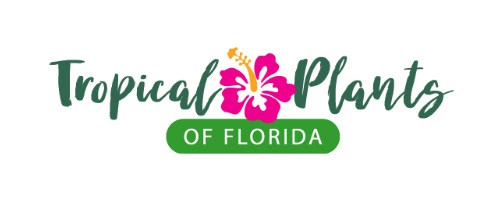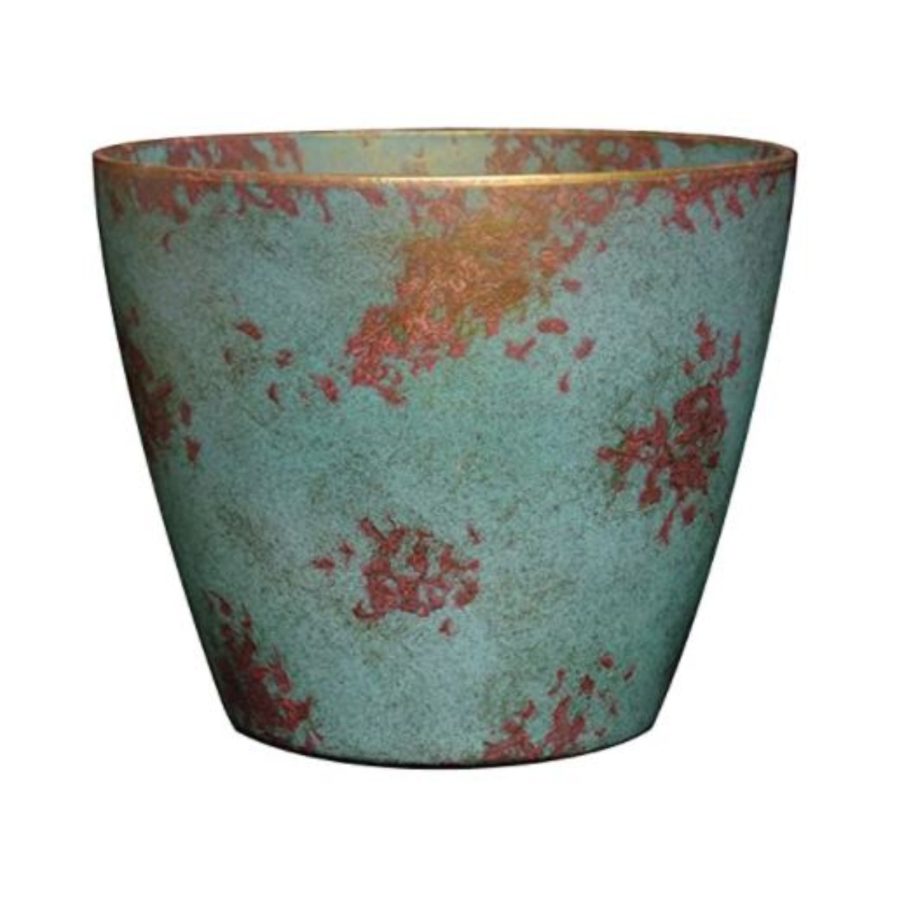How To Choose The Perfect Planter
Planters, Pots, and tips
Welcome, plant lovers! Today, we’re diving into the essential art of selecting the perfect planter or pot for your beloved green companions. Whether you’re a seasoned plant parent or just starting your indoor jungle, finding the right planter is crucial for your plants’ health and growth. Let’s explore the key factors to consider and some expert tips for ensuring your plants thrive in their new homes.
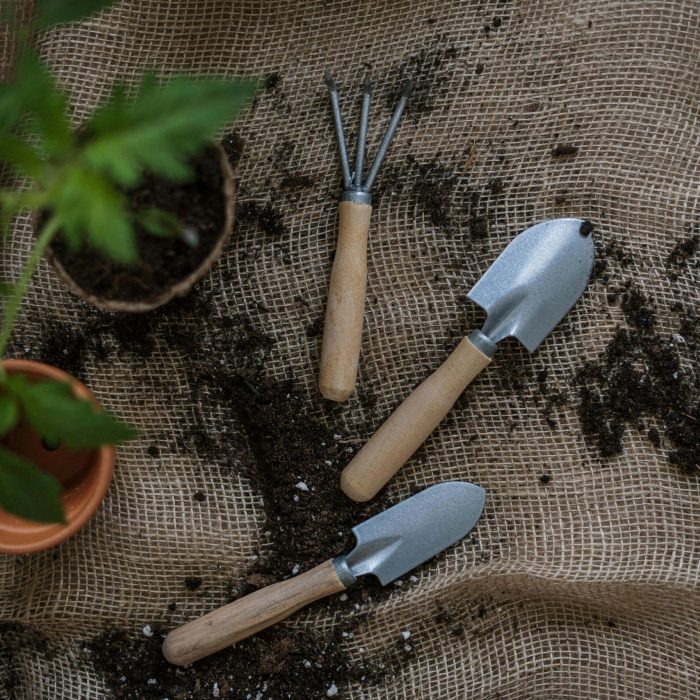
When Should You Re-Pot?
Before we delve into the world of planters and pots, let’s briefly touch on when it’s time to repot your plants. While visual cues like roots poking out of drainage holes or water pooling on the soil surface after watering are telltale signs, it’s essential to consider a few more factors.
Root Bound:
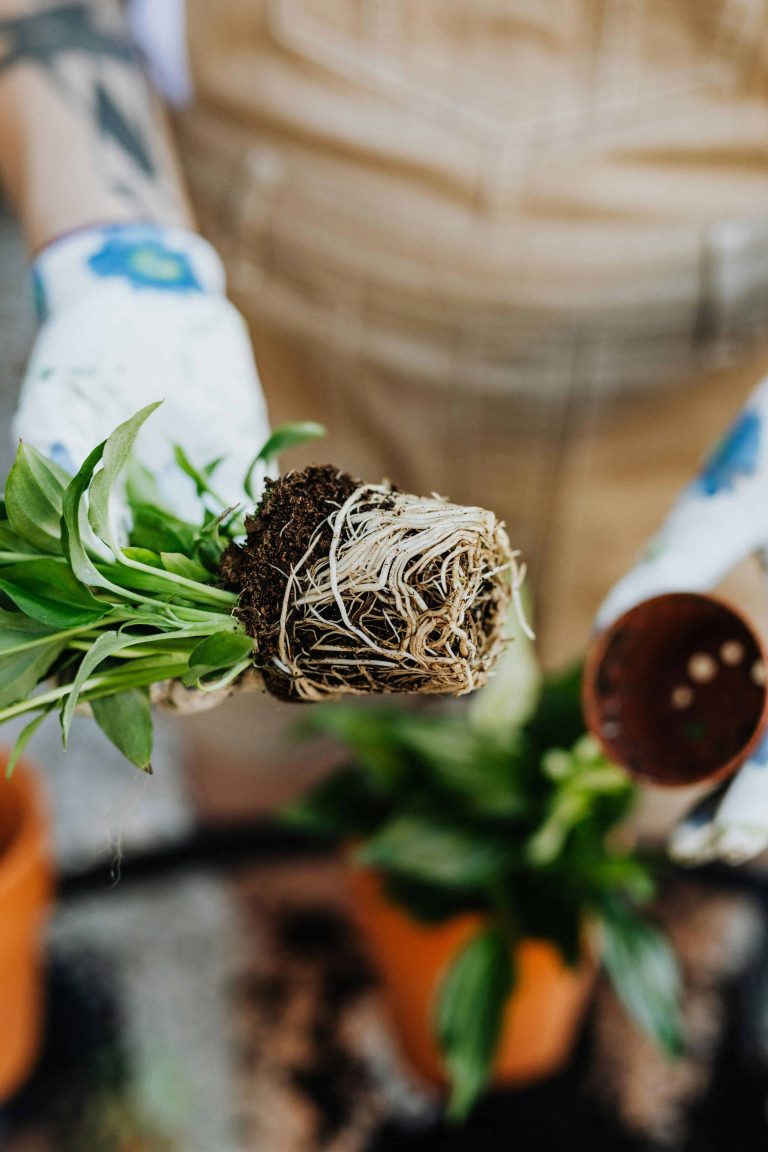
If you notice a dense mass of roots encircling the inside of the pot, your plant has likely outgrown its current container. Root-bound plants may struggle to access sufficient nutrients and water, leading to stunted growth and diminished vitality.
Soil Depletion:
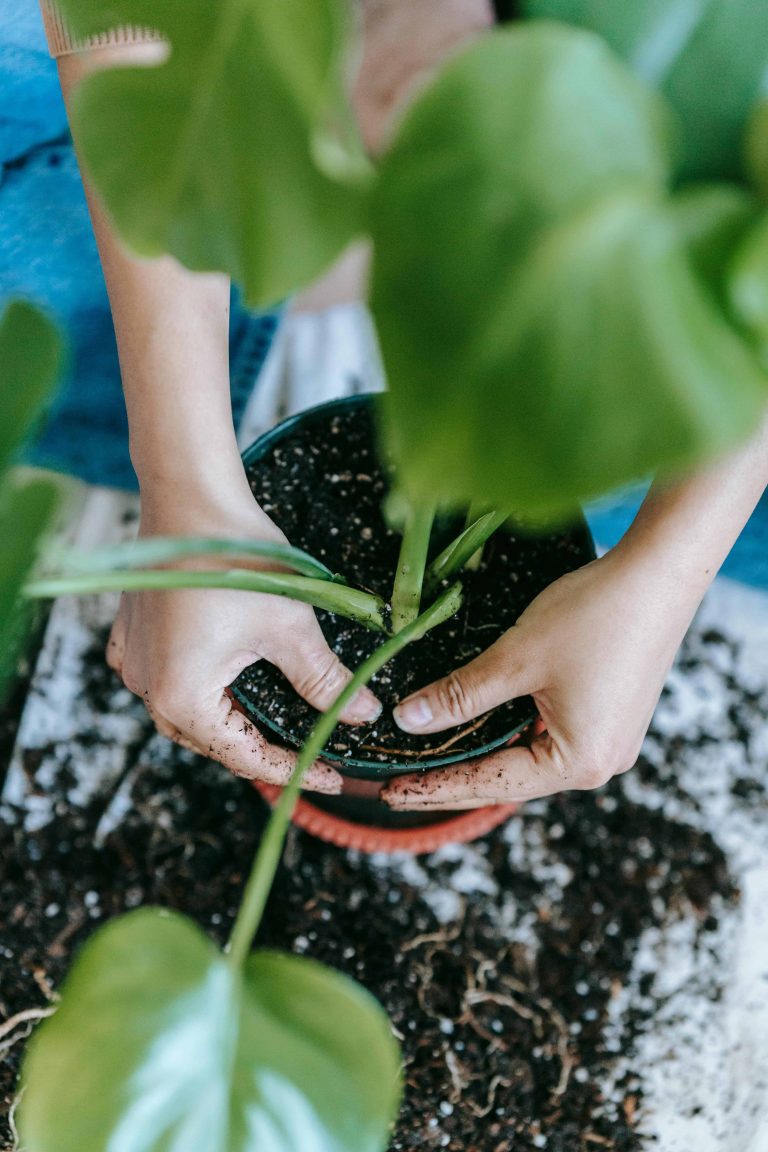
If you notice a dense mass of roots encircling the inside of the pot, your plant has likely outgrown its current container. Root-bound plants may struggle to access sufficient nutrients and water, leading to stunted growth and diminished vitality.
Drying Out Quickly:
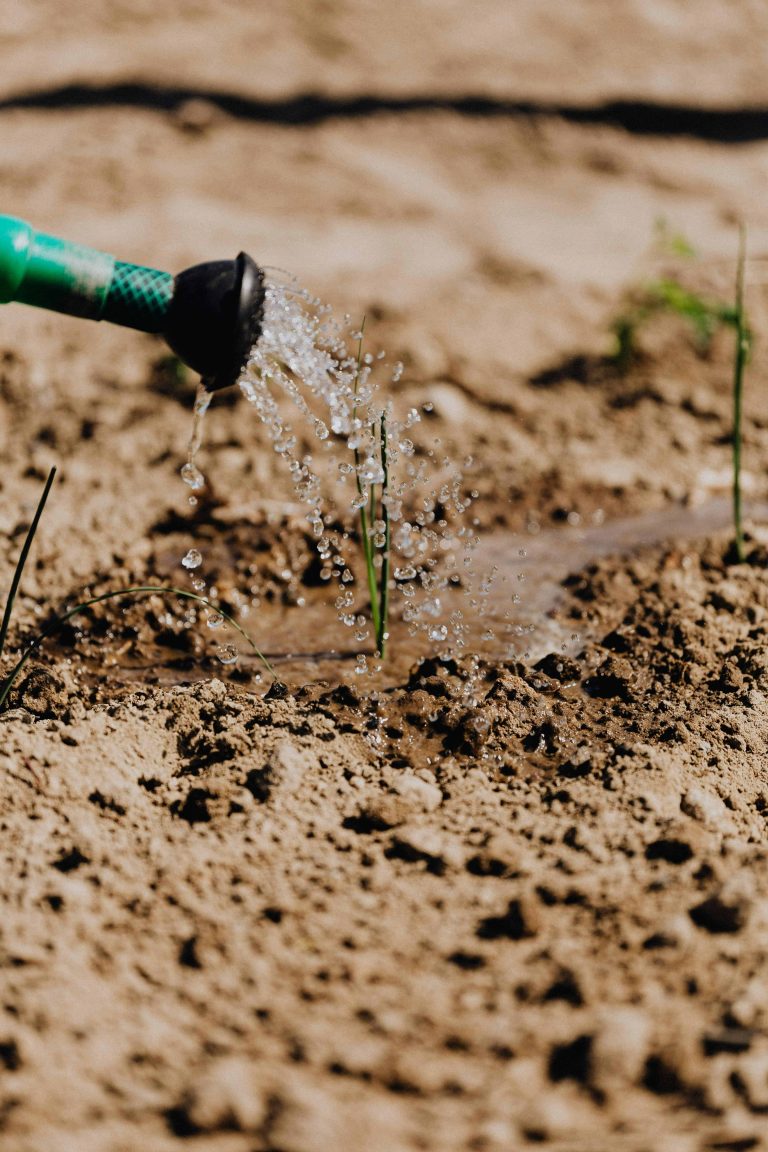
Plants that require frequent watering due to soil drying out rapidly may indicate that the pot is too small to retain adequate moisture. Repotting into a larger planter with better water retention properties can help alleviate this issue.
Visible Stress
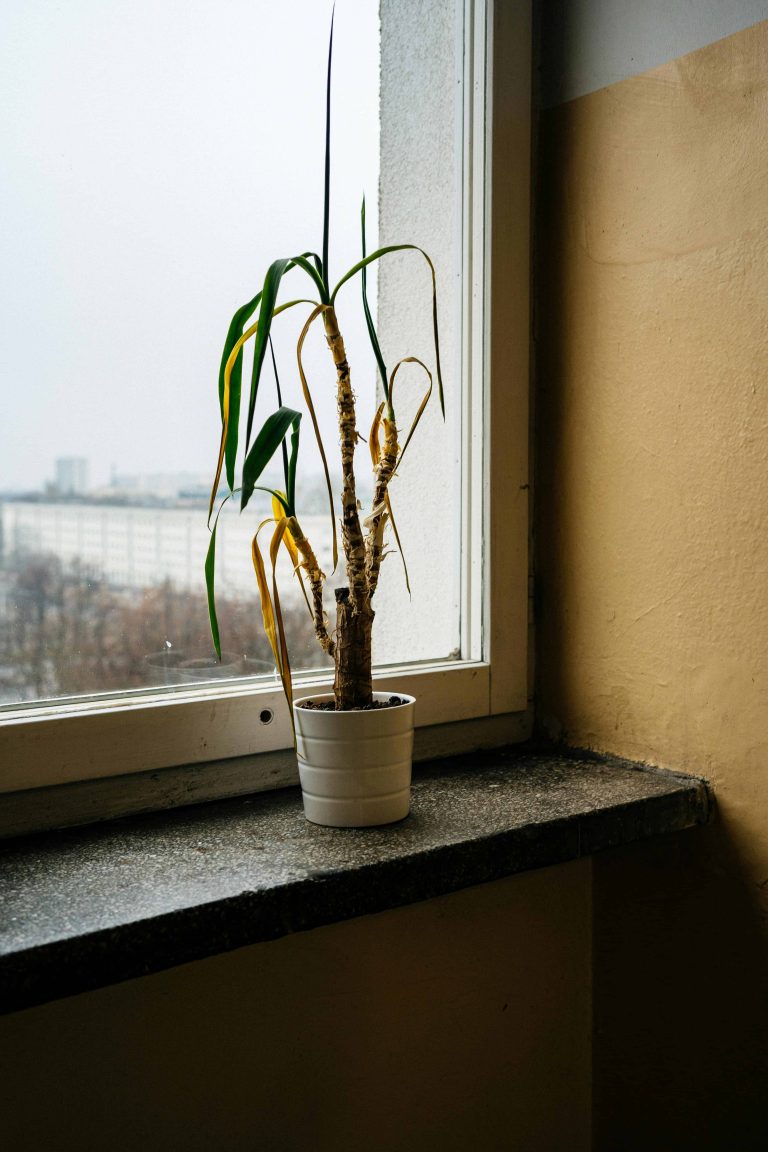
Pay attention to your plant’s overall appearance and behavior. Wilting, yellowing leaves, or a generally unhealthy appearance may indicate that the plant is struggling and could benefit from a larger pot with fresh soil.
Waiting Period Before Repotting
A frequently asked question among plant enthusiasts is how long to wait before repotting newly acquired plants. At Tropical Plants of Florida, we advise our customers to allow a waiting period of 3 to 4 weeks before repotting their plants. This waiting period allows the plant to acclimate to its new environment and adjust to the local climate conditions.
Once the waiting period has passed, you can then consider repotting your plant into a decorative pot that not only provides ample space for root growth but also enhances the aesthetic appeal of your indoor oasis. By following this recommended waiting period, you give your plant the best chance to thrive in its new home and minimize the risk of transplant shock.
Remember, successful plant care requires patience and attention to detail. By observing your plants closely and responding to their needs accordingly, you can create an environment where they can flourish and bring joy for years to come.
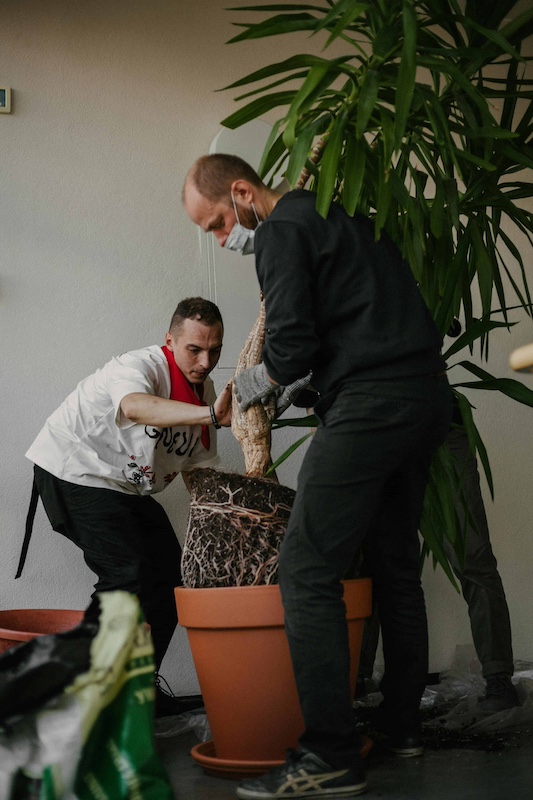
The 4 Important Factors of Repotting: Size, Shape, Drainage, Material
When it comes to selecting the perfect planter, four key factors come into play: size, shape, drainage, and material. Each of these elements contributes to your plant’s overall well-being and aesthetic appeal.
Size :How to Choose the Right Size Planter
Choosing the right size planter is crucial for your plant’s growth. Measure the diameter of your plant’s current pot and aim for a planter that’s 1-2 inches larger in diameter to allow room for growth. For example, if your plant’s current pot measures 6 inches in diameter, opt for a planter that’s 7-8 inches in diameter.
Depth Matters
In addition to diameter, pay attention to the depth of the planter. Plants with deep root systems, such as some varieties of ferns or palms, will benefit from a deeper pot that allows their roots to spread downward. Conversely, shallow-rooted plants like succulents may prefer a shallower planter to prevent water from pooling around their roots.
Room to Breathe:
When selecting a larger planter, ensure that there’s ample room for the plant’s roots to grow and expand comfortably. Crowded roots can lead to stress and hinder the plant’s ability to absorb nutrients and water efficiently.
Consider Growth Rate
Take into account the growth rate of your plant when choosing a new planter size. Fast-growing plants may outgrow their pots more quickly and require larger containers to accommodate their rapid growth.
Balance Aesthetics with Functionality
While it’s tempting to prioritize aesthetics when selecting a planter, don’t forget about functionality. Ensure that the chosen planter provides adequate space for your plant’s root system while complementing your home decor style.
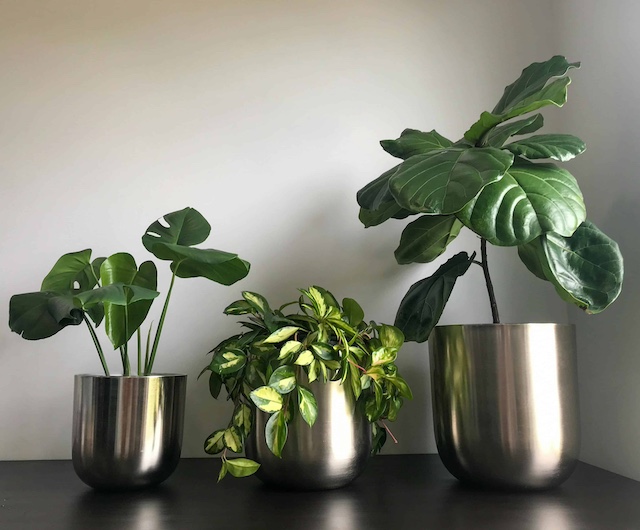
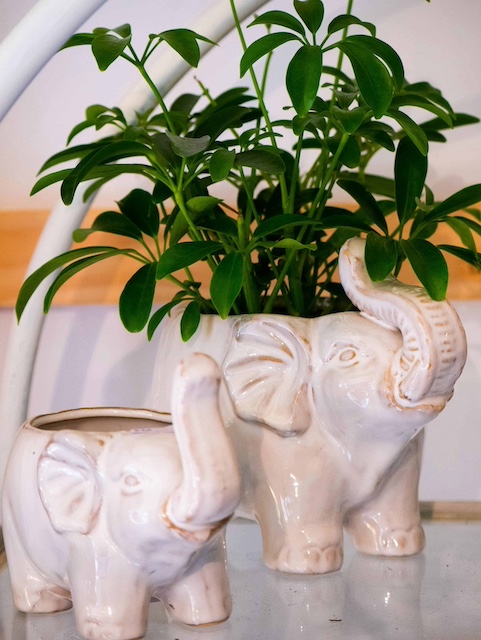
Shape:The Importance of Planter shape
While the shape of your planter may seem like a purely aesthetic choice, it can actually impact your plant’s health in profound ways. Beyond just looks, the shape of the planter directly influences how your plant’s roots grow and interact with its environment. current pot measures 6 inches in diameter, opt for a planter that’s 7-8 inches in diameter.
Root Growth
Tall, narrow planters encourage plants to grow deeper roots, as they provide more vertical space for root expansion. This is beneficial for plants with deep root systems, such as bamboo or snake plants, as it allows them to establish a strong foundation and access water and nutrients from deeper soil layers.
Room Spreading
Conversely, shallow, wide planters promote lateral root growth, enabling plants with spreading root systems, like spider plants or succulents, to thrive. These plants benefit from the extra horizontal space, allowing their roots to spread outwards and anchor themselves securely in the soil.
Air Circulation
The shape of the planter also affects air circulation around the plant’s roots. Tall, narrow planters may restrict airflow to the lower portions of the root system, potentially leading to moisture buildup and root rot. In contrast, shallow, wide planters allow for better air circulation, reducing the risk of fungal diseases and promoting overall root health.
Consider Growth Habits
When selecting the shape of your planter, consider your plant’s growth habits and natural habitat. Plants that originate from dense forests may thrive in tall, narrow planters that mimic the conditions of their native environment, while desert-dwelling species may prefer shallow, wide containers that allow for quick drainage and ample airflow.
Planter Drainage: Why It Matters
Proper drainage is indeed essential for maintaining optimal soil moisture levels and preventing waterlogged conditions that can lead to root rot and other plant health issues. However, ensuring effective drainage goes beyond just having drainage holes at the bottom of your planter.
Adequate Drainage
When selecting a planter, prioritize those with ample drainage holes spaced evenly across the bottom. These holes allow excess water to escape freely, preventing it from accumulating in the bottom of the pot and saturating the soil.
Quality Soil
Pairing a well-draining planter with high-quality, well-aerated potting soil further enhances drainage and promotes healthy root growth. Avoid using garden soil, as it tends to compact over time and can impede drainage.
Avoiding Waterlogging
In addition to drainage holes, consider the pot’s design and material. Unglazed clay or terracotta planters naturally wick moisture away from the soil, helping to prevent waterlogging. However, glazed ceramic or plastic planters may require more attention to drainage, as they can retain moisture more readily.
Layering for Improved Drainage
If your chosen planter lacks drainage holes, you can create a makeshift drainage system by adding a layer of coarse gravel, clay pebbles, or broken pottery shards to the bottom of the pot before adding soil. This layer allows excess water to collect at the bottom of the pot, away from the plant’s roots, preventing waterlogging.
Watering Considerations
When watering your plants, aim to moisten the soil evenly without over-saturating it. Water thoroughly until excess water begins to drain from the bottom of the pot, then discard any remaining water that collects in the saucer to prevent water from being reabsorbed by the plant’s roots.
Monitoring Moisture Levels
Keep an eye on soil moisture levels and adjust your watering schedule as needed based on environmental conditions and the plant’s individual needs. Use a moisture meter or simply check the soil with your finger to gauge when it’s time to water.
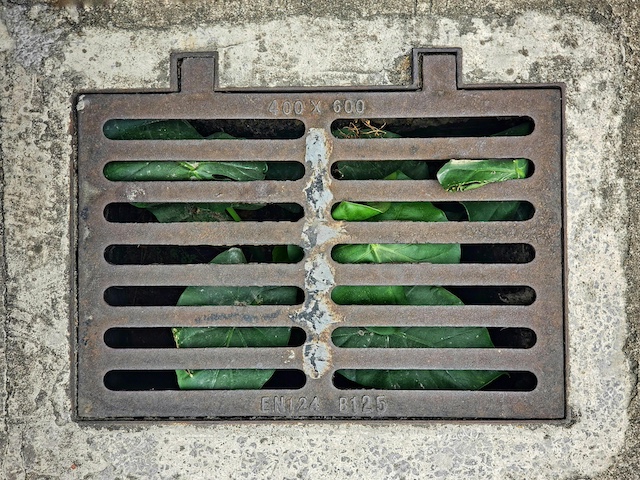
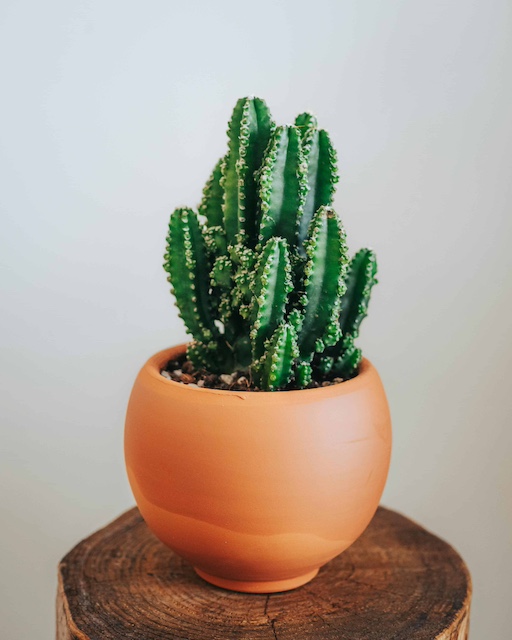
How To Choose Your Planter Material
The material of your planter plays a crucial role in influencing various aspects of plant health and aesthetics. Let’s delve deeper into the characteristics of common planter materials and how they can impact your plant’s well-being:
Ceramic
Ceramic planters are prized for their durability and aesthetic appeal. They come in a variety of colors, textures, and designs, making them versatile for any decor style. Ceramic planters are generally porous, allowing for airflow to the roots and aiding in soil aeration. However, their porous nature also means they may require more frequent watering as they can dry out faster than other materials.
Terracota
Terracotta planters have been used for centuries due to their natural, earthy appearance and excellent breathability. Like ceramic, terracotta is porous, allowing for air exchange and moisture regulation in the soil. This makes them ideal for plants that prefer well-draining soil and environments with good airflow. Keep in mind that terracotta can be prone to cracking if exposed to extreme temperature fluctuations or moisture.
Plastic
Plastic planters are lightweight, durable, and affordable, making them a popular choice for indoor and outdoor gardening. They come in a wide range of shapes, sizes, and colors, offering versatility in design. Plastic planters are non-porous, meaning they retain moisture well and require less frequent watering. However, they may not provide as much airflow to the roots as porous materials like ceramic or terracotta.
Metal
Metal planters, such as those made from stainless steel or galvanized iron, add a modern and sleek touch to any space. They are durable and resistant to weathering, making them suitable for outdoor use. Metal planters are non-porous and retain moisture efficiently, making them ideal for plants that prefer consistently moist soil. However, without proper insulation, metal planters can heat up quickly in direct sunlight, potentially overheating the roots.
Considerations for Choosing Material
Moisture Retention: Consider your plant’s watering needs and environmental conditions. If you tend to forget to water your plants or live in a dry climate, plastic or metal planters may be more suitable. For plants that prefer well-draining soil, ceramic or terracotta planters are preferable.
Durability: Assess the durability of the material, especially if you plan to place the planter outdoors or in high-traffic areas.
Aesthetics: Choose a material that complements your decor style and enhances the overall look of your space.
Check Out TPOF Planters
Ready to find the perfect planter for your plants? Explore (TPOF) selection of high-quality planters designed to enhance your indoor/outdoor oasis. From sleek ceramic pots to rustic terracotta planters, TPOF has everything you need to elevate your plant game.
With these expert tips in mind, you’re well-equipped to choose the perfect planter for your plants, ensuring they thrive and flourish in their new homes. Happy planting!
-
8″ Vogue Planter Collection
$14.95 Select options This product has multiple variants. The options may be chosen on the product pageRated 4.70 out of 5
